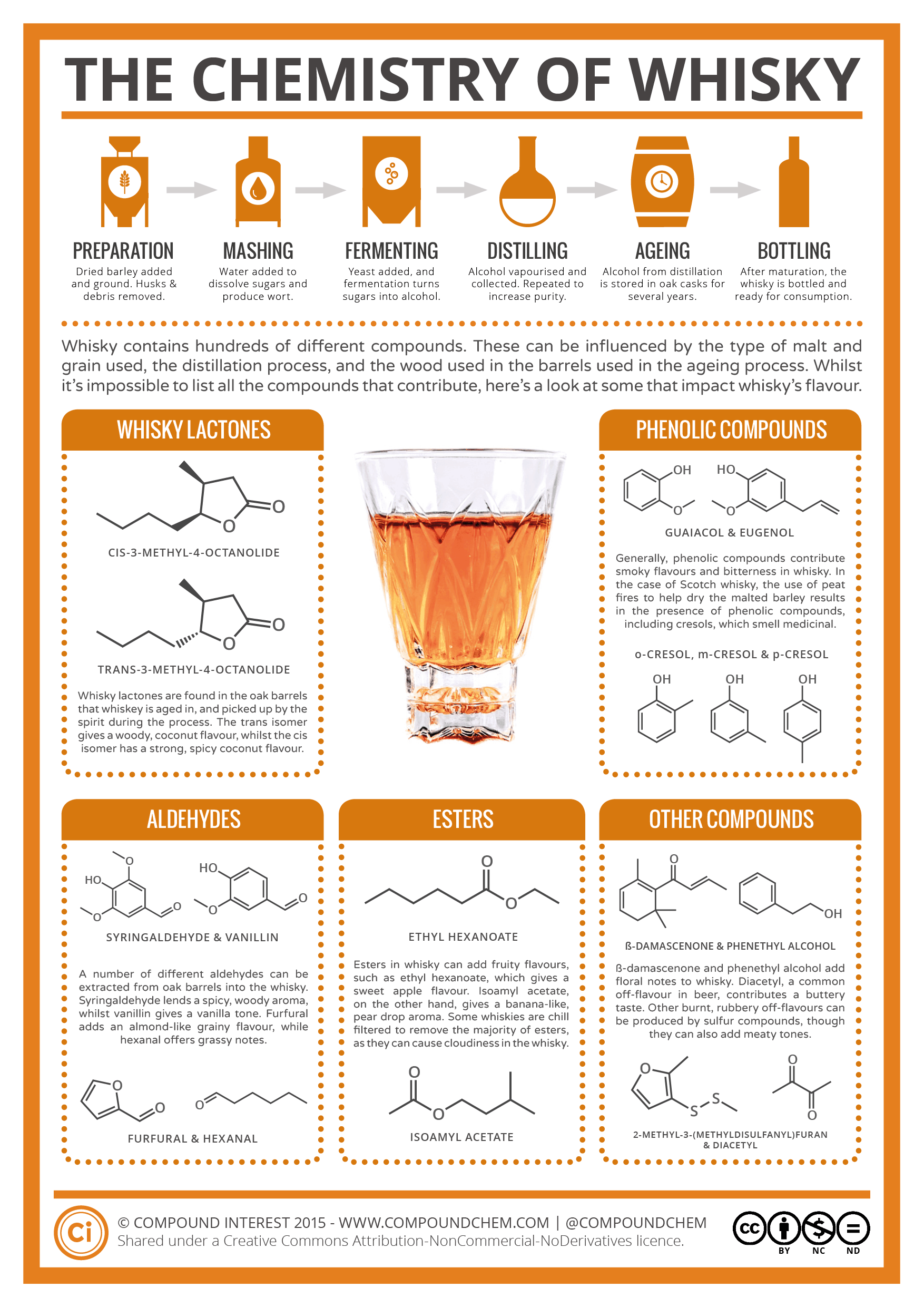Why does my bourbon smell like vanilla?
There’s no added flavorings or additives, right? Correct. Bourbon can not have anything added to it like colorings or flavor additives. The vanilla you smell is in its chemistry…
You may read tasting notes that look like this (for Elijah Craig 12 year old)…
“Nose: Quite thick and full. There is a beautiful sweetness with notes of toasty oak, toffee, spicy stewed fruits, a touch of resin and a lovely crème anglaise character.
Palate: Full and sublimely smooth with notes if stewed Bramley apples, malmsey, a touch of aniseed and a hint of spice.
Finish: Good length with toasty oak notes and a creamy sweetness.”
What does that mean? How can whiskey taste like toffee or apples?
Let me start by saying that taste and smell is subjective. Everyone has different tastes and preferences, so talking about what is better or worse is pointless. What we can discuss is why you would even smell these things you like or dislike in the first place.
Whiskey is made from grains that each have their own characteristic smells and tastes. Those grains are malted to bring out their sweet sugars so the yeasts have food to eat. Yeasts eat those sugars and expel alcohol, carbon dioxide and all other sorts of tiny “flavor” molecules that show up in the distiller’s beer. (Each yeast is different and expels different flavor molecules. Four Roses uses 5 different types of yeasts to create different flavor profiles in their whiskey!) Distilling strips a lot of those molecules out, but quite a bit stays in the finished product and those flavors go into our whiskey!
The barrel is where most of the flavors that we all love in our whiskey come from. The clear, flavorful liquor that goes into the barrel interacts with the wood. Think of it as the white whiskey almost “dissolving” the wood. The barrel itself has been charred. Almost like a beautifully cooked steak, the wood is cooked and the sugars in the wood are caramelized while it gets a nice crispy char. The alcohol absorbs all those beautiful flavors from the charred wood.
All that being said, while the alcohol is sitting in those barrels a lot of chemistry is happening. The components of the wood (lignin, cellulose and hemicellulose) are being broken down and are reforming into new molecules. Guaicol (those spicy char flavors) comes from the lignin breaking down and furfurals (sweet, butterscotch, light caramel and almond flavors) are coming from that caramelized cellulose and hemicellulose. Lactones give that oaky, coconut flavor. Vanillins (much more present in American white oak) gives you that immediately recognizable bourbon flavor of vanilla. I could go on all day about the eugenols and phenols and esters in your whiskey…let’s just say there are about 500 flavors that have been recognized in whiskey and only about half of those have been isolated.
You don’t need to be rocket scientist to realize that your nose and tongue sense flavors on a molecular level. Each flavor is your brain recognizing certain aroma molecules as “rose” or “onion” or “gym bag”. There are machines designed to recognize individual scents, but it turns out that our noses are much better at recognizing tastes and scents than any machine! The scents in your bourbon are just your amazing brain recognizing very specific molecules! So breathe it in! Your whiskey has a lot of scents to offer and your brain has a lot of recognizing to do!

